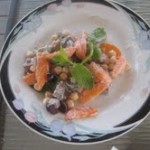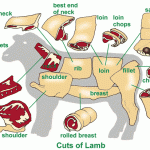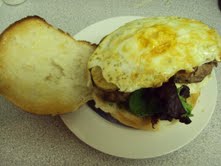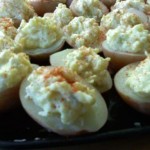I’m not sure why, but I’ve always associated eggplant with winter; the illusions of our global market, I suppose, since the purple blobs are actually in season right now. I picked up a few lovely looking baby ones at the farmer’s market the other day, and have been mucking about with them, trying to do something interesting. Turns out, so far, that classic (or at least classic-ish) works best.
The main thing I’ve learned is that purging is absolutely essential: the final product is much less greasy and grainy, with better flavor. Purging goes like this: you slice the eggplant, salt it pretty generously on both sides, and leave it in colander for just over an hour. The salt draws out some of the moisture from the outside layer, making it firmer and sealing the insides. Then, you rinse the eggplant (very well, you don’t want all that salt in your dish), and dry them with paper towels (I squeeze them a bit to be sure). Then cook them. This is especially critical if you’re frying, but important in other prep too, for eggplants. Also works on plantains, tomatoes, etc.
My best dish this eggplant week was, as I said, simple and fairly classic. I used:
1 Italian eggplant, sliced into circles ~1cm thick, and purged
3 large cloves finely minced garlic
1.5 tbs herbes de Provence
1/2 tsp cayenne
Olive oil
Salt
Fresh black pepper
While the eggplant is purging, grease a tray with some oil, and make a dressing from the garlic, herbs, cayenne, and about a tablespoon of oil. Preheat your oven to 425. I actually made this in my toaster oven, because it’s bloody hot these days and I wanted to minimize the heat in my kitchen.
Once purged and dry, arrange your eggplant on the tray, and top each slice with your dressing (which should be very thick…almost a rub). Throw that in the over for about 25 minutes, or until the tops are a little bit browned and crispy.
Serve as hors d’oeuvres, side dish, or even as a whole meal if you make a larger batch.
– MAW










